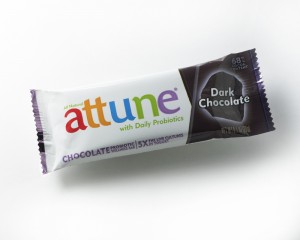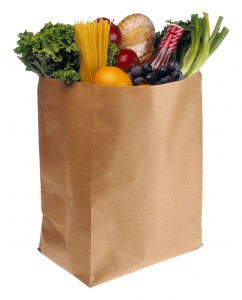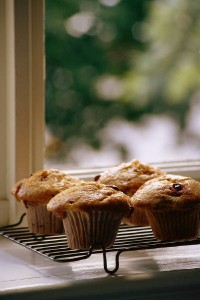Question:
How can I get more fiber in my diet? I was used to eating high fiber cereals/breads/crackers etc. before being diagnosed with celiac disease. I eat a lot of fruits and vegetables but I know I am not getting 20-30 grams of fiber a day.
Answer:
Dietary fiber is the part of whole grains, fruits, vegetables, legumes (dried beans, peas and lentils), nuts and seeds that cannot be broken down by the human digestive system. Although fiber is not readily digested, it plays an important role in the body, particularly through its effects on the digestive system. Fiber helps to maintain regular bowel movements. A high fiber diet can also play a role in the prevention of certain chronic diseases such as coronary artery disease, diabetes, colon cancer and diverticular disease.
Consuming adequate amounts of fiber is especially important for people with celiac disease. Many newly diagnosed individuals may have symptoms of diarrhea due to malabsorption caused by gluten damaging the absorptive surface of the small intestine. However, once a gluten-free diet is initiated, the intestinal tract begins to heal and the malabsorption and diarrhea eventually resolve. Some may then have problems with constipation. It should also be noted that many individuals with celiac disease actually present with constipation prior to their diagnosis which may get worse on the gluten-free diet.
As many gluten-free foods are made with starches and/or refined flours which are lower in fiber, it can be a challenge getting enough fiber in the diet. The Dietary Reference Intake (DRI) for fiber varies for different age groups and sex. The DRI for females and males ages 19-50 is 25 and 38 grams per day respectively. For ages 51-70 it is 21grams (females) and 30 grams (males).
Here are some tips to increase your fiber intake…
* Gradually increase fiber in the diet (start with a small amount) along with an increased fluid intake, especially water
* Choose a variety of high-fiber gluten-free foods on a regular basis
* Mix it up. Add ground flax, mesquite flour, rice bran or rice polish to pancakes, hot cereals or baked products. Extend hamburger patties or meat loaf with ground flax, cooked brown rice or oatmeal (pure, uncontaminated gluten-free). Add cooked amaranth, quinoa or teff to puddings. Use quinoa or brown rice flakes, oatmeal (pure, uncontaminated, gluten-free) or gluten-free granola as a topping for fruit crisp
* Toss it up. Use brown rice, buckwheat, millet, quinoa, teff or wild rice in salads
* Use your bean. Add chickpeas (garbanzo beans), kidney beans and other bean varieties to salads, casseroles and soups
* Soups on. Make soups with lentils or split peas
* Pilaf Ideas. Add cooked buckwheat, oat groats or steel cut oats (pure, uncontaminated, gluten-free)quinoa, sorghum or wild rice to a rice pilaf recipe
* Use high-fiber gluten-free mixes (homemade or from gluten-free companies) containing amaranth flour, bean flours, brown rice flour, ground flax, mesquite flour, Montina™, oat flour (pure, uncontaminated, gluten-free), quinoa flour, sorghum flour, teff flour or a combination of some of these flours in baked products
* Try hot cereals for breakfast such as Altiplano Gold Instant Hot Quinoa Cereal, Ancient Harvest Organic Quinoa Flakes, Bob’s Red Mill Mighty Tasty GF Hot Cereal, The Birkett Mill Pocono Cream of Buckwheat Hot Cereal, Cream Hill Estates Lara’s Rolled Oats, Holly’s Gluten-Free Oatmeal Cereal Porridge with Cranberries, Gluten-Free Oats® Old Fashioned Rolled Oats
* Flax it up. Sprinkle ground flax on yogurt or add to fruit smoothies
* Snack right. Consume high-fiber snacks such as dried fruits, nuts, seeds and popcorn. Choose high-fiber snack bars with dried fruits, nuts and/or seeds (e.g., Bumble Bar, Larabar, Mrs. May’s Naturals, Perfect 10)
* Eat, rather than drink. Eat whole fruits and vegetables rather than drinking juice
* Choose right. Choose breads with at least 2 grams of fiber per serving such as Ener G Seattle Brown, Kinnikinnick Brown Sandwich or Schar Multigrain. Choose higher fiber pastas such as brown rice, lentil, quinoa, soy or wild rice instead of white rice. Try high-fiber crackers such as Mary’s Gone Crackers or Crunchmaster Baked Multigrain Crackers
* NOTE ABOUT OATS: Must be pure, uncontaminated, gluten-free oats. Some available resources are from Bobs’ Red Mill, Cream Hill Estates, FarmPure Foods, Gluten-Free Oats, Gifts of Nature. For more information about the safety of oats in the gluten-free diet see: http://www.glutenfreediet.ca/oats.php
Here are a few examples comparing the fiber content of seeds and grains:
|
Seeds & Grains (1 cup raw)
|
Fiber ( grams)
|
|
Flax seed
|
45.9
|
|
Amaranth
|
18.1
|
|
Sesame seeds (kernels, dried decorticated)
|
17.4
|
|
Millet
|
17.0
|
|
Buckwheat Groats (roasted, dry)
|
16.9
|
|
Oat Groats (pure uncontaminated, GF)
|
15.2
|
|
Sunflower Seeds (hulled kernels, dry roasted)
|
14.2
|
|
Teff
|
11.2
|
|
Quinoa
|
10.0
|
|
Wild Rice
|
9.9
|
|
Brown Rice (long grain)
|
6.5
|
|
White Rice (long grain, parboiled, enriched)
|
4.1
|
A comprehensive list of foods and their fiber content can be found in The Gluten-Free Diet www.glutenfreediet.ca
Note: Ask Shelley Case is a feature of BeFreeForMe.com. It is published the second Tuesday of each month. Shelley Case is a Registered Dietitian, Consulting Dietitian, Speaker and Author of Gluten-Free Diet: A Comprehensive Resource Guide.
 I’m super excited about Attune Probiotic Chocolate Bars being this week’s sponsor of BeFreeForMe WIN-It-Wednesday. I’m excited because these bars not only taste good… but they are good for you too!
I’m super excited about Attune Probiotic Chocolate Bars being this week’s sponsor of BeFreeForMe WIN-It-Wednesday. I’m excited because these bars not only taste good… but they are good for you too!

 on food labels to discover these “hidden sources” of gluten? Help!
on food labels to discover these “hidden sources” of gluten? Help!